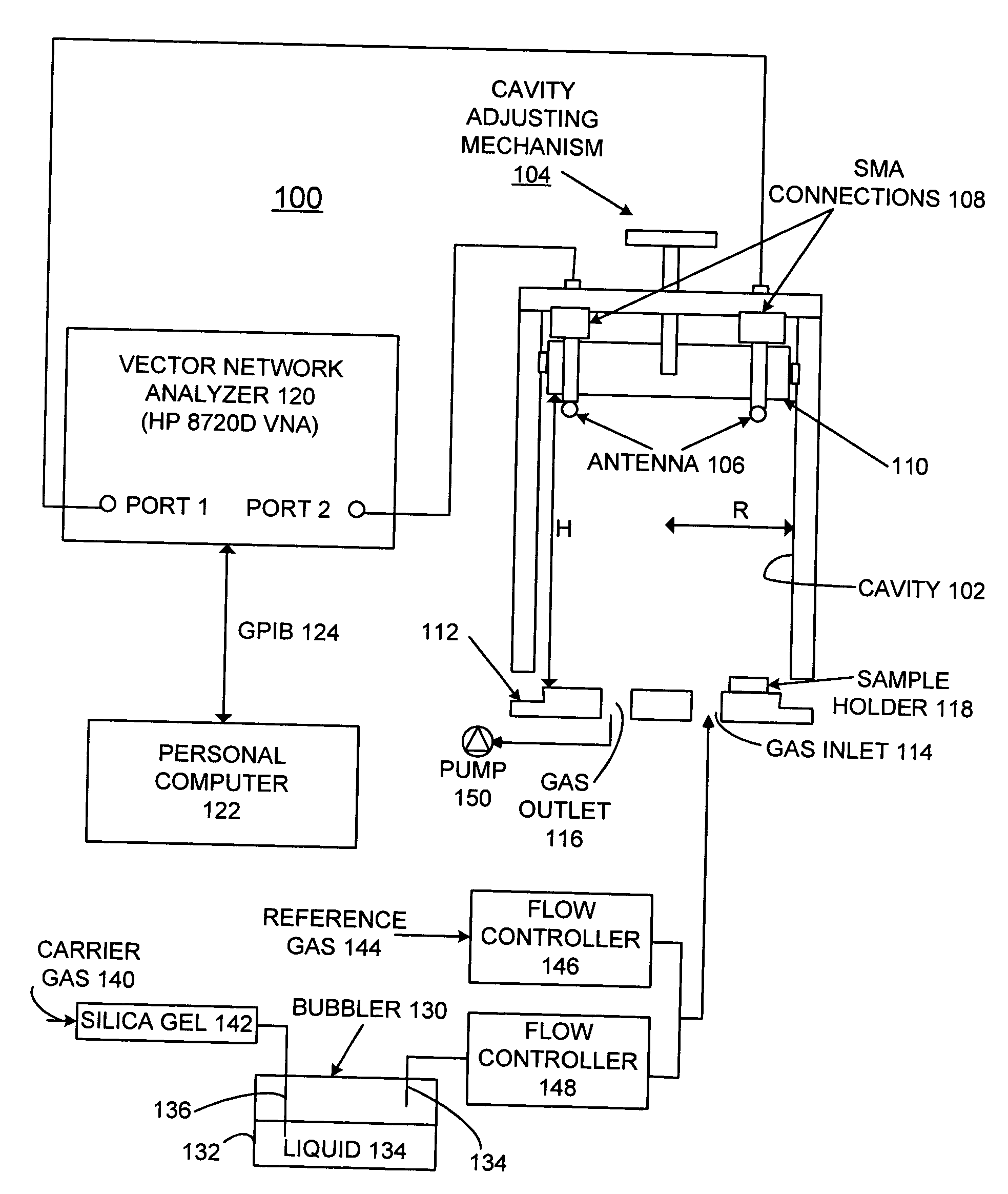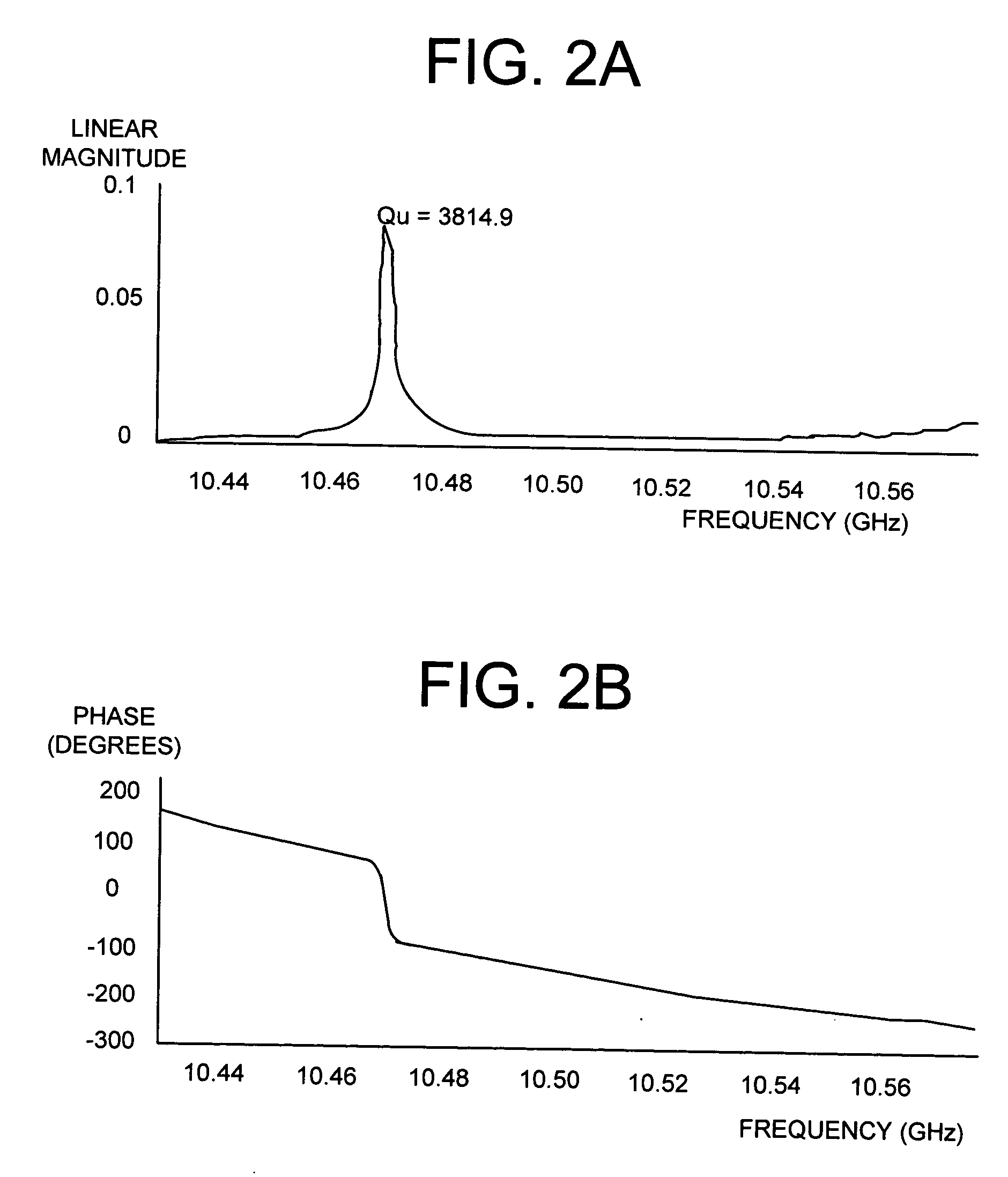Resonance-enhanced dielectric sensing of chemical and biological species
a dielectric sensing and biological technology, applied in the direction of material analysis, material thermal analysis, instruments, etc., can solve the problems of lack of specificity in identifying materials, few chemical or biological sensors based on dielectric measurements, etc., and achieve enhanced selectivity and detection sensitivity
- Summary
- Abstract
- Description
- Claims
- Application Information
AI Technical Summary
Benefits of technology
Problems solved by technology
Method used
Image
Examples
Embodiment Construction
Features of the preferred embodiment include a new method that provides a degree of selectivity based on the extent to which the complex dielectric constant of a material affects the signal pattern of a resonator. A microwave cavity has been used to demonstrate the proof of principle of selectively detecting gas-phase chemicals and biological macromolecules. The method is applicable at any excitation frequency from RF to terahertz range; however, if the excitation frequency is selected to correspond to one of the resonance frequencies, relaxation-type or spectroscopic, of the material under investigation, the degree of selectivity and the sensitivity of detection can be improved significantly. For example, dielectric materials exhibit relaxation-type resonance at microwave frequencies, and DNA molecules appear to exhibit distinct resonance interactions at terahertz frequencies. With such unique absorption spectra being identified for materials, the method can be applied to a stando...
PUM
| Property | Measurement | Unit |
|---|---|---|
| RF frequencies | aaaaa | aaaaa |
| frequencies | aaaaa | aaaaa |
| dielectric sensing | aaaaa | aaaaa |
Abstract
Description
Claims
Application Information
 Login to View More
Login to View More - R&D
- Intellectual Property
- Life Sciences
- Materials
- Tech Scout
- Unparalleled Data Quality
- Higher Quality Content
- 60% Fewer Hallucinations
Browse by: Latest US Patents, China's latest patents, Technical Efficacy Thesaurus, Application Domain, Technology Topic, Popular Technical Reports.
© 2025 PatSnap. All rights reserved.Legal|Privacy policy|Modern Slavery Act Transparency Statement|Sitemap|About US| Contact US: help@patsnap.com



